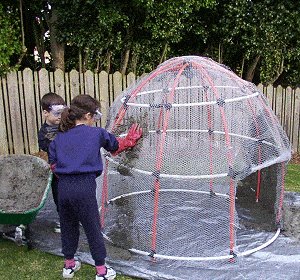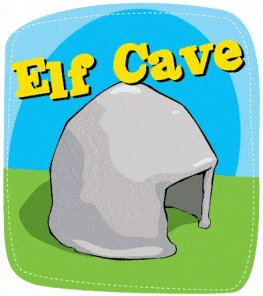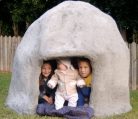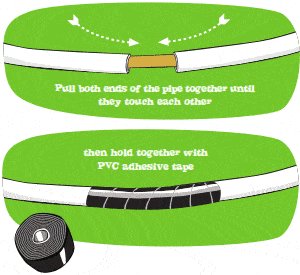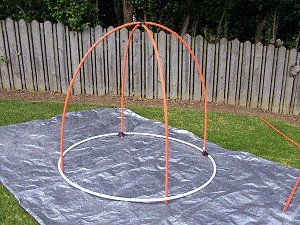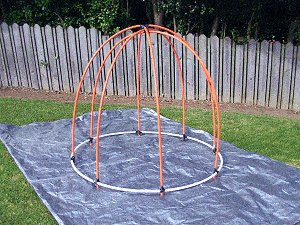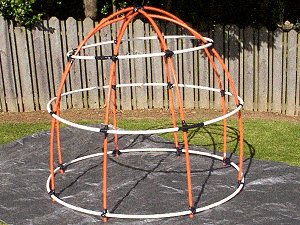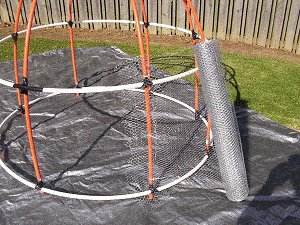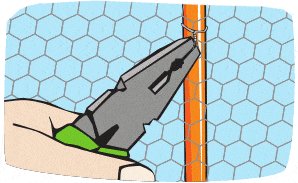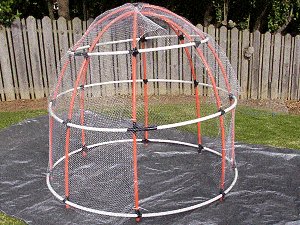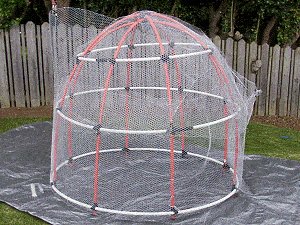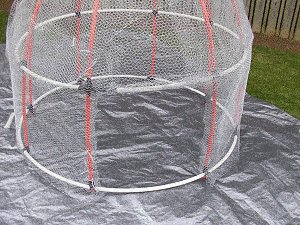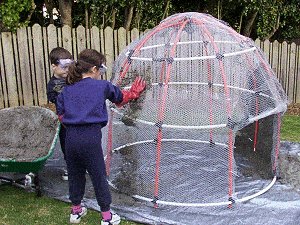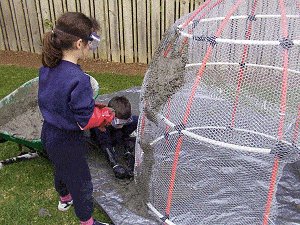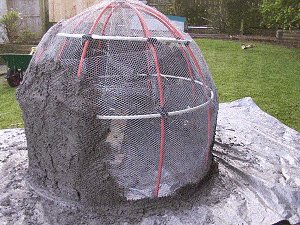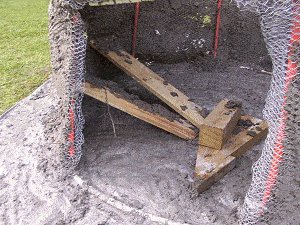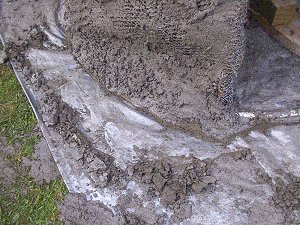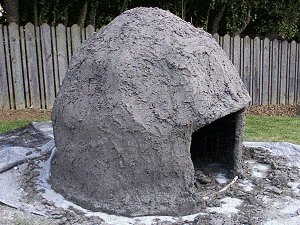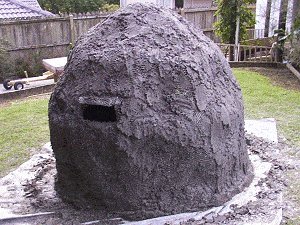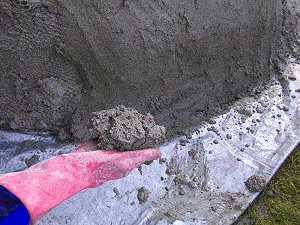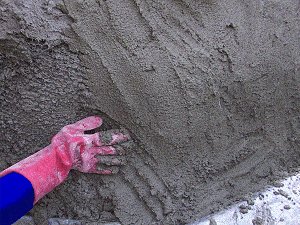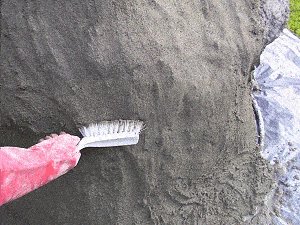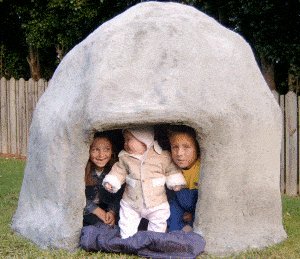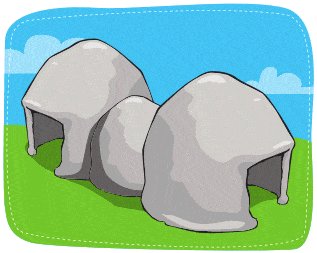Contents
Preface
I first co-authored this project with my daughter Roseanne in 2004-2005. It was one of five projects we were commissioned to do for a book called ‘DIY for kids – book two’. That book was published by HarperCollinsPublishers (NZ) Limited in 2005.
In all, we authored ten projects for two books, involving kids in all the projects.
The project that the kids most enjoyed participating in was this project – the elf cave.
This online version has been modified to suit a more universal audience in so much as standard (ft and inch) measurements have been added to the metrics, some of the terminology has been made more generic, and additional material options have been added – Oh! and the title has been changed.
Apart from that it’s pretty much the same animal.
Elf cave
$5.00- Pay online by credit card, debit card, or Paypal using Secure Server Paypal. You do not need a Paypal account if paying by credit or …
|
Introduction
Fun for the whole family! A dabbling with plaster, making a mess and anything goes. Throw away the level and the straight edge – in this project, nothing has to be straight, level or exact. A frame made of PVC water pipe or conduit pipe is wrapped in wire and then plastered in cement plaster. Once built, this charming elf cave will be around for years and years.
Safety stuff
Kids are encourages to get involved in the making of this elf cave, but under strict supervision from a capable adult.
All normal safety practices must be adhered to.
In particular, the shell is made of plaster which contains cement. Cement is a fine powdery substance that should not be inhaled. Cement also has a caustic nature when mixed with water and can cause damage to skin. When using, simply be smart – wear clothes that cover the whole body, a pair of long rubber gloves, a pair of safety goggles and an appropriate breathing mask. It is all inexpensive stuff and easy to obtain.
About measurements, tools, materials
Tools you will need
- Sawhorse or work stool
- Spade
- Pair of long-nose pliers
- Pair of wire snips or garden scissors
- Sharp handsaw
- Measuring tape
- Bucket
- Wheelbarrow
About the measurements
Dimensions given in this project are in both Metric (m, mm) and Imperial (ft, inches).
Note: m = metre, mm = millimetre, ft = feet, also ‘ = feet, and “ = inches.
Example: 4′ 5½” = 4 feet, 5 and a half inches.
The metric measurements are given first followed by the standard measurements in brackets ( ). For example: 100 mm x 50 mm (2″ x 4″).
Materials you will need
- 20 mm (3/4″) plastic conduit pipe or similar size PVC water pipe: one 3.4m (11′ 4″) long, one 4.7m (15′ 8″) long, one 5m (16′ 8″) long, four 3.5m (11′ 8″)long
Note: You can use other material in place of the PVC pipe such as a bendy type wood or 10mm (3/8″) thick reinforcing rod.
- Tarpaulin 2400 mm x 2400 mm (8′ x 8′) or bigger
- Multipurpose flexible PVC tape
- Tie wire
- Wire netting: 13 mm (1/2″) max hole galvanized wire netting 900 mm x 20 m (3′ x 67′) or enough to cover an area of 18 sq m (200 sq ft)
- Three 40 kg bags (three approx 90 lb bags) of cement (more or less)
- One car trailer-load of wash-mix sand (0.5 m³ (18 cubic ft))
Construct the pipe frame
Instructions
1. Construct the frame base circle
- Cut a piece of 20 mm (3/4″) overall diameter flexible pipe 5 metres (16′ 8″) long and join one end of the pipe to the other end to create a circle.
- Most flexible pipes are slightly enlarged at one end, so the smaller end can fit snuggly into the larger end. Wrap tape around the join so it cannot come apart. (If the pipe is not enlarged at one end, join the two ends together as shown in the following paragraph “Joining the pipe”.)
- Lay the circle on the ground where you are going to make the elf cave. Build the elf cave on a tarpaulin or a plastic sheet because there is going to be a lot of dropped plaster!
- Joining the pipe: Most flexible pipes are slightly enlarged at one end, so the smaller end can fit snuggly into the larger end.
- If the pipe does not have an enlarged end, so the other end can fit snugly into it, join the pipes by first inserting a 200 mm (8″) long stick (just slightly thinner than the hole in the pipe) into both ends of the pipe. Pull both ends of the pipe together until they touch each other and then hold together with PVC adhesive tape.
2. Make the first two frame arches
- Cut four pieces of 20 mm (3/4″) overall diameter flexible pipe 3.5 metres (11′ 8″) long.
- Bend one piece, creating an arch, so that both ends are inside the base circle and the arch is standing upright.
- Bend another piece in the same way but at right angles to the first and going over the top of the first.
- Tape the ends of the arches to the circle and the top of the arches to each other.
Pipe frame, about the wire netting
3. Create remaining frame arches
- Bend and fit the remaining two pieces of flexible pipe in the same manner as described in step 2. Fit the remaining two pieces underneath the first two. Tape all meetings with PVC adhesive tape.
Did You Know? Water goes through water pipe, and cables go through conduit pipe. The diameter of conduit pipe is taken from the outside of the pipe, where as the diameter of water pipe is taken from the inside. Therefore, 20 mm (3/4″) conduit pipe is about the same size as 15 mm (5/8″) water pipe. In the pictures, the 15 mm (5/8″) water pipe is the white pipe and the 20 mm (3/4″) conduit pipe is the red pipe. Both are about the same size and either can be used.
4. Construct the horizontal frame
- Make up another two circles in the same way as step 1, using a 3.4 m (11′ 4″) long flexible pipe for one, and a 4.7 m (15′ 8″) long flexible pipe for the other.
- Put the bigger circle over the arch frame and tape in place approximately 650 mm (2′ 2″)up from the ground. The smaller circle can then be taped to the top of the arch frame where ever it sits snugly.
About the wire netting:
- Use 13 mm (1/2″) maximum hole size galvanized netting. Because there is no backing to support the plaster, at least 3 layers of netting is required to envelop the frame and hold the plaster in place.
- The netting should be tied together with tie wire every 250 mm (10″), both vertically and horizontally.
- On average, a gap of about 20 mm (3/4″) between the outside layer and the inside layer is ideal, but this may be hard to achieve so just ensure there is not too much of an area where the gap between the outside layer and the inside layer is a lot bigger that 20 mm (3/4″).
- Also make sure there are not many areas where the outside layer and the inside layer are touching each other.
Apply the wire netting
5. Begin the netting
- Start from one upright flexible pipe frame and wrap the netting around the lower structure horizontally twice. (Run the bottom of the netting along the ground).
- Cut off with wire snipe of garden scissors or similar. At this stage, just hold the netting in place with enough wire ties as necessary.
6. Tie the wire
- Hold the netting in place with tie wire.
- Poke thin pieces of tie wire through the holes in the netting, around the pipe and back out through the wire netting and twist to hold with a pair of pliers.
- Cut off any excess tie wire.
7. Net the top half
- Cut lengths of netting about 1m (40″) long and lay and tie them to the top half of the structure.
- Because the structure is dome-shaped, the netting will have to be folded and bent in places to achieve the desired surface shape.
8. Complete the netting
- Continue laying and fixing the netting until there are at least three layers neatly enveloping the complete structure.
- The netting should be tied together with tie wire about every 250 mm (10″) both vertically and horizontally.
Make the door, a dabble into plaster
9. Make the door
- Cut a hole for the door using wire snips or similar. Fold back any excess netting on the sides and fold up any excess netting hanging down. This will make a good solid door head. Situate the doorway at the lowest part of the ground, so that when it is finished rain water won’t run in.
- Make a window in any place or any size you wish. Just cut a hole in the netting and fold up the netting like you did for the door.
A dabble into plaster
Cement plaster is a mixture of cement, sand, and water. This is the most basic of cement plasters. Most professional plasterers also use other additives that can make the plaster more pliable, stick better, dry faster, or even be more waterproof. However, a basic plaster mix is fine for this project. Plaster mix can be bought in handy size bags but that is only economical for small jobs. Also bags of sand can be purchased in handy size bags as can bags of cement.
But for this project? – Loose sand can be purchased by the trailer-load which is the most economical way for this project.
An average car trailer can usually hold half a cubic metre (18 cubic ft).
- When making the plaster, make the mix ratio four parts of sand (washed sand) to every one part of cement.
- You will probably need a trailer load of sand and at least three 40kg (90lb) bags of cement, but this can vary greatly depending on how thick you plaster or how much you waste.
WHAT’S THE DIFFERENCE BETWEEN CEMENT PLASTER AND CONCRETE?
Just the stones. Plaster is a mixture of cement, sand, and water. Concrete is a mixture of cement, sand, gravel, and water.
Make a mix of plaster
10. Make a mix of plaster
- In a wheelbarrow (or concrete mixer if you have one) add four spades full of sand, two of cement and then another four of sand.
- This is a mix ratio of four parts sand to every one part of cement. Use washed sand or sand suitable for plaster – your supplier will know.
- Mix the dry mix (before adding water) to a uniform consistency. That means until the mix looks even throughout.
- If you use bags of pre-mixed plaster, the instructions will be on the bag. A smaller spade is easier to work with than a bigger one.
- Start pouring water in and mixing. The above mixture will take about a third to a half of a standard household bucket of water. Mix with the spade from underneath and fold over.
- Keep doing this and adding the water until it is a uniform consistency, a bit like porridge.
- Make a stiff mix – not too runny or it will fall through the wire netting. If the mix is too dry, add a bit more water. If the mix is too runny, add some more cement and sand (at the same mix ratio) and mix well.
11. Let the fun begin!
Safety! wear a pair of long rubber gloves (preferably with some sort of lining on the inside) and a pair of safety goggles so no plaster can splash in your eyes.
- Grab a handful of plaster: gently place it on the wire netting and smooth over with your hand, sort of like stroking a cat. If you throw it on of push too hard, the plaster will fall through the wire netting and land on the tarpaulin. You will soon get the hang of it, and all the plaster that you drop or that falls through the netting can be picked up and used again provided it is still clean and hasn’t gone hard or crumbly.
Plaster at leisure
12. Plaster at leisure
- You don’t have to do it all at once. You can spread it over days if you need to, but allow at least 24 hrs before continuing to allow the previous work to harden.
- You can do as much or as little as you like each session.
- Sometimes it might be necessary to put a timber prop on the inside against the wire netting to stop the wiring from sagging in too much under the weight of the plaster.
13. Clean around the sides
- After each session, allow a couple of hours for the plaster to firm a bit (or even wait until early next morning), and then cut and remove excess plaster from around the bottom edge with a spade. This will be difficult to do if the plaster has been allowed to set too hard.
Apply the second coat
14. Complete the first coat
- Once the first coat is complete, allow at least 24 hours before putting on the second coat.
Apply the second coat
- Allow at least 24 hours before putting on the second coat.
- Spray the first coat with water to dampen it before applying the second coat. The second coat is easier than the first, because it will not fall through the wire netting and also you will have had more practice in plastering. Just grab a handful of plaster and spread it around.
- You can smooth it with your hands, a piece of wood or even use a hand brush.
- When dry, you can remove the PVC pipe that is at the bottom of the doorway by cutting it with a handsaw.
A few important notes
- Mix the plaster well, to an even consistency.
- Clean the plaster off the ground a couple of hours (or the next morning) after each session.
- If the days are hot and there is plenty of sun, then do a session in the late afternoon when it’s a bit cooler.
- Don’t let the plaster dry too fast. Keep it damp by gently spraying water over it (once the plaster has gone hard enough so as not to run)
Stretch your imagination
When you have mastered this, you may want to design your own structure.
Your only limited by your imagination, although make sure everything is arch shaped or dome shaped for added strength.

